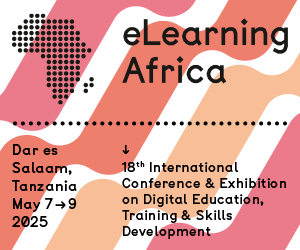History Presented through a Game
 Cerklje na Gorenjskem (SI), November 2014 - Boštjan Kernc is a teacher of history, Slovene language and literature, and journalism at a primary school. As a daily user of many different learning materials, he is aware of eLearning possibilities, but remains skeptical about the benefits of existent e-materials, particularly in humanistic studies. As a result, he is constantly on the lookout for new approaches - active and playful serious games. He will present the "French Revolution, Animated Serious Game" at OEB on 05 December 2014 from 14:30 to 15:45 in session IMM52.
Cerklje na Gorenjskem (SI), November 2014 - Boštjan Kernc is a teacher of history, Slovene language and literature, and journalism at a primary school. As a daily user of many different learning materials, he is aware of eLearning possibilities, but remains skeptical about the benefits of existent e-materials, particularly in humanistic studies. As a result, he is constantly on the lookout for new approaches - active and playful serious games. He will present the "French Revolution, Animated Serious Game" at OEB on 05 December 2014 from 14:30 to 15:45 in session IMM52.
What is the target group of the serious game? Who developed it?
Boštjan Kernc: The game is based on the idea that children in primary and secondary school (aged from thirteen to eighteen) are quite slow at acquiring abstract topics and topics concerning complex social events and movements contained in the existent teaching material. Therefore, I thought of the idea of creating an interesting, schematic, effective, and active narrative of history for them, a kind of performance with tasks. However, it also had to be a game that contained a good story, an interesting teaching topic, and at the same time would encourage critical thinking that could always attract older generations, too.
The illustrator Nina ArliÄ helped me put my ideas into an attractive form, and the animator Miha Kavšek brought them to life on the computer.
Where it is used and for what purpose?
Boštjan Kernc: Until now, it has been used in school as a self-learning tool to deal with the whole chapter of the French Revolution, from its causes and description of the situation to its consequences. It takes about ninety minutes; with a debate that can be led by some provocative questions, which could take an additional lesson. Some chapters could be excluded from the game and used in lessons dealing with other topics, e.g. ideas about the Enlightenment, feudal society, the concept of a republic, etc.
History is often very general and multi-faceted. By presenting it through a game, we wanted to make it closer to the learner; to personalize it, which is certainly a good motivating factor.
Why is the French Revolution a relevant topic for an educational game, and not, for example, the American, Russian, or another revolution?
Boštjan Kernc: I think that there are many relevant topics for an educational game, and I guess that the French Revolution is not the ultimate one, but it represents the very beginning of great social movements and integrated the entire spectrum of social classes and many modern social ideas. It is the beginning of a new world era, said Goethe. For this reason it is a very useful topic for our experiment on how to effectively explain very complex, abstract and distant history topics, and at the same time motivate children to deal with them, to actively take part in them and also to think about them. The French Revolution provides us with many opportunities for actualization – it opens the questions of personal freedom, democracy, social and political action, power of crowds, media, adoration of the people, the recourse to violence, etc.
What has the players’ reaction to the game been?
Boštjan Kernc: Generally very positive. They want more! What they like most is to be able to participate in the game and to perform different tasks, but they also enjoy the nice and attractive characters and music, clear schemas, and sometimes humorous animations. I love their motivation and the learning effect. Some pupils feel a little uncomfortable with the length of the text and the slow progress of the game, but, in my opinion, the aim of serious games is to activate their brain and not merely to make them use fast fingers and eyes. The pleasure experienced in playing this kind of a game and its attractive form are predominantly intended to encourage learners to put more effort into the game and to maintain their motivation.









